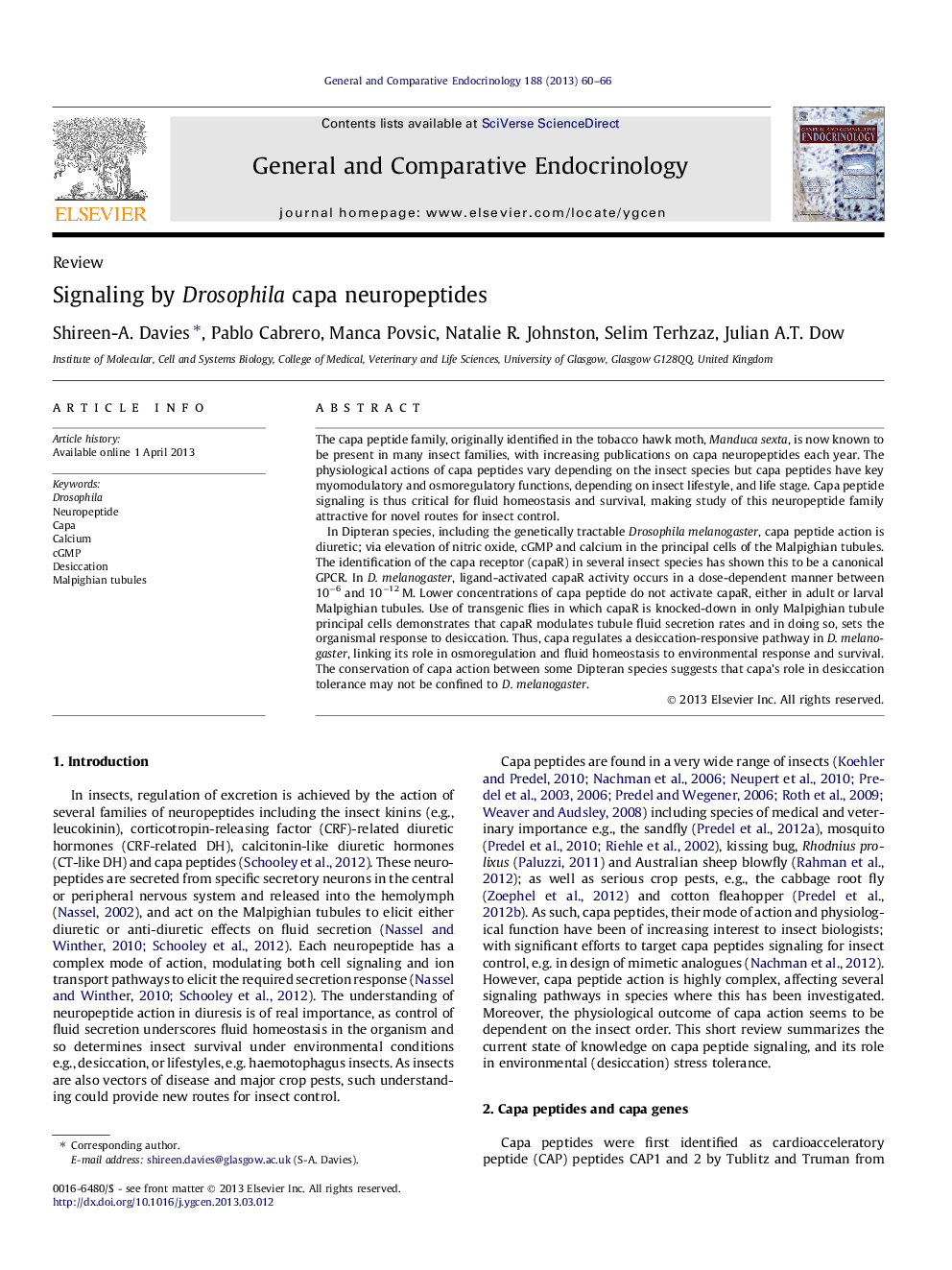| Article ID | Journal | Published Year | Pages | File Type |
|---|---|---|---|---|
| 5901323 | General and Comparative Endocrinology | 2013 | 7 Pages |
Abstract
In Dipteran species, including the genetically tractable Drosophila melanogaster, capa peptide action is diuretic; via elevation of nitric oxide, cGMP and calcium in the principal cells of the Malpighian tubules. The identification of the capa receptor (capaR) in several insect species has shown this to be a canonical GPCR. In D. melanogaster, ligand-activated capaR activity occurs in a dose-dependent manner between 10â6 and 10â12Â M. Lower concentrations of capa peptide do not activate capaR, either in adult or larval Malpighian tubules. Use of transgenic flies in which capaR is knocked-down in only Malpighian tubule principal cells demonstrates that capaR modulates tubule fluid secretion rates and in doing so, sets the organismal response to desiccation. Thus, capa regulates a desiccation-responsive pathway in D. melanogaster, linking its role in osmoregulation and fluid homeostasis to environmental response and survival. The conservation of capa action between some Dipteran species suggests that capa's role in desiccation tolerance may not be confined to D. melanogaster.
Related Topics
Life Sciences
Biochemistry, Genetics and Molecular Biology
Endocrinology
Authors
Shireen-A. Davies, Pablo Cabrero, Manca Povsic, Natalie R. Johnston, Selim Terhzaz, Julian A.T. Dow,
